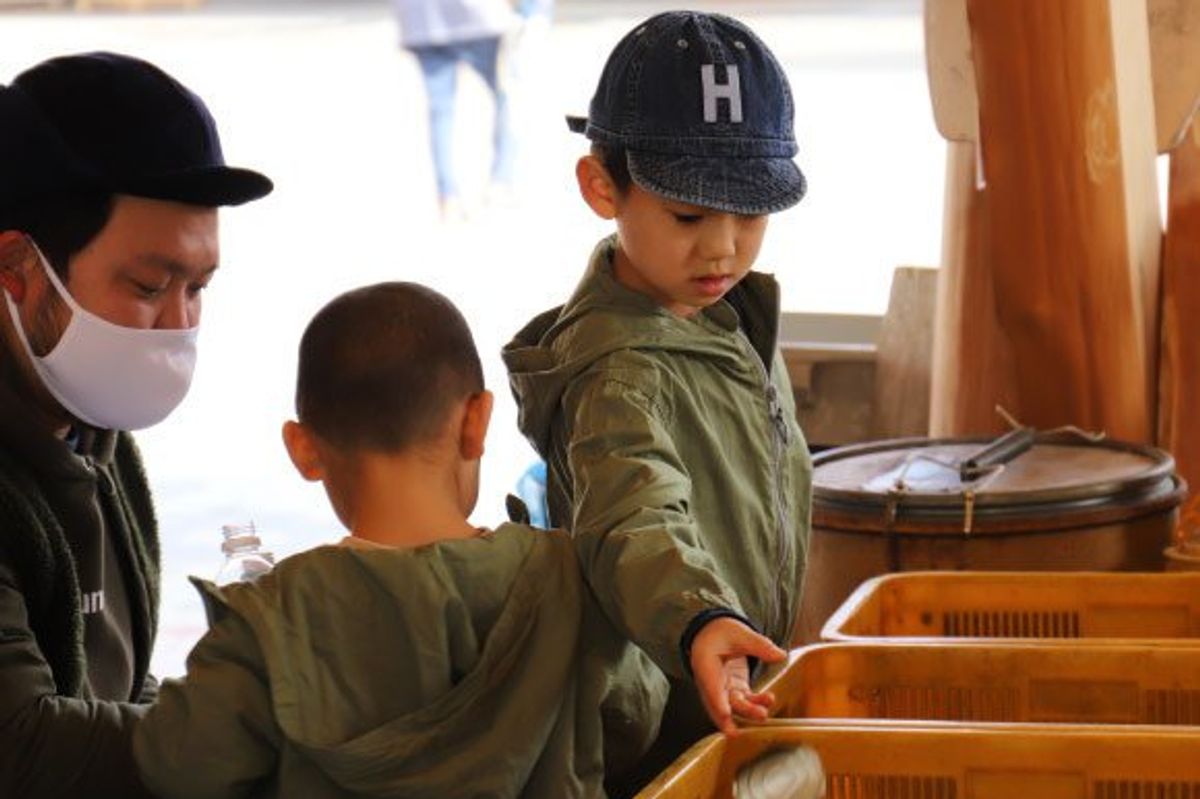How Kamikatsu became the first zero-waste town in Japan, and what we can learn from them
Meet the tiny town that's radicalizing the ways we recycle.
Anyone can transform their relationship with waste.
In Japan, one of the first things you notice is how intense they are about recycling. Bins are guarded by two to three uniformed protectors who are quick to tell you if you’re doing things wrong. For a novice—especially one from America—that seems to be almost everything. The plastic plate wasn’t washed clean enough, you’re headed to the wrong bin (there are many, all with varying purposes), etc.. It can feel quite exhausting until you realize that Japan is a global leader in plastic bottle and e-waste recycling, with an impressive 86% and 70%, respectively. Compare that to the global recycling numbers: according to the Ellen MacArthur Foundation, about 30% of plastic water bottles (PET) are recycled globally and only 22% of all e-waste is formally recycled globally.
However, nestled in the lush mountains of Shikoku Island—the smallest of Japan’s four islands—is a tiny town that’s revolutionizing the trash and recycling industry. Welcome to Kamikatsu. All 1,400 residents here are so committed to zero-waste, they sort their garbage into 45 different categories and don’t even use garbage trucks. And their efforts have paid off: Kamikatsu received a remarkable 81% recycling rate—the highest in the world, thus far.

For perspective, Japan’s national average (for overall solid waste recycling) is only 20%. Germany is considered as the global leader in recycling household and municipal waste, with a recycling rate of 67%. Following Germany are Austria (58%), South Korea (59%) Slovenia (58%), and Belgium (54%). The United States rests at 32%, although it aims for 50% by 2030. In short, Kamikatsu isn’t just lapping the world’s global leaders: it’s redefining what’s possible.
Which wasn’t always the case. In the 1970s, there was nothing exceptional about Kamikatsu, in terms of recycling. According to ReasonsToBeCheerful: “The roots of Kamikatsu’s reuse revolution go back decades. During Japan’s postwar economic boom, the expansion of mass industry created huge amounts of waste, which increased from 6.2 million tons in 1955 to 43.9 million tons in 1980. In response, municipalities across Japan, including Kamikatsu, began to build incinerators to dispose of it all. But over time, concern grew about the pollution being created.”

The town’s transformation took years, beginning in 1991, when officials first tackled food waste by providing composters to every household. By 1997, they’d created nine categories for recycling:
- Newspapers
- Magazines and flyers
- Cardboard
- Milk cartons
- Other paper
- Aluminum cans
- Steel cans
- Glass bottles
- PET bottles
This was the moment that changed everything for Kamikatsu, a significant cultural and logistical shift that laid the foundation for years to come. "It was tough because it changed their day-to-day duties," admits Akira Sakano, founder and director of Zero Waste Japan, "but people got used to it."

Today, Kamikatsu continues its goal to become fully zero-waste. The town closed down their incinerators, removed all garbage trucks, and now boasts a radical 45 categories for recycling.
But do you really need a 45-category system to cut back on waste? Of course not. Here are five practices anyone can adopt at home:
- Compost your food waste. According to Kamikatsu’s garbage guide (which was helpfully translated by Core77), “Compost food scraps [is] the only resource you can recycle yourself.” By using compost bins, electric composters, and bamboo composters, residents are able to transform food scraps into valuable fertilizer.
- Embrace second-hand. The town has a “Kuru-kuru” shop, which translates to “come and go,” and offers free second-hand items to anyone who wants them. Each product is weighed and tracked, to account for exactly how much waste is avoided. To do this locally, try joining your neighborhood’s Buy Nothing group, or donate to a Tiny Free Library.
- Get creative with upcycling. Local artisans in Kamikatsu transform old clothes, like kimonos, and koinobori (fish-shaped streamers) into bags, jackets, and toys. So, ask yourself: Do I really need to throw away that jar, or could it become a treasured container? Old t-shirts could become lovely, braided rugs. Egg cartons make wonderful painted art projects or storage bins.
- Reuse your own containers. Places like The Refill Shoppe, Common Good, and Clean Cult offer green alternatives to single-use cleaning solutions and soaps. Their wide variety of refillable products also use less packaging and contain non-toxic ingredients.
- Question consumption. The Kamikatsu Zero Waste Center is shaped in a giant question mark, urging people to ask why they must spend money on something. Their website reads: “Why do you buy it? Why do you throw it away?” It’s a reset, an invitation to rethink your relationship with constant consumption.
As we face mounting environmental challenges, Kamikatsu offers a powerful reminder: with community commitment and creative thinking, we can transform our relationship with waste. Are you ready to try?

